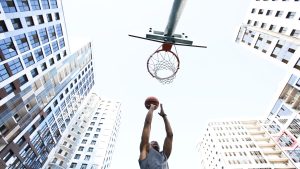If you watch a tennis match today, you’ll probably hear the players verbally grunt each time they hit the ball. Sometimes, they do so very loudly.
Monica Seles, the former women’s top-ranked star, has been credited as one of the originators of the grunt in modern tennis. Her grunt as she hit the ball was recorded at 90 decibels, the same level as a metro car. Sounds above 85 decibels are considered potentially harmful.
But what’s the story behind the grunt?
Some have theorized that it might be a way for players to distract their opponents. At the 1988 U.S. Open, Ivan Lendl complained about Andre Agassi’s loud grunting, claiming that it threw off his timing.
A natural thing
Most tennis players use the grunt these days, and many claim it’s simply something that comes naturally to them.
“I’ve done this ever since I started playing tennis and I’m not going to change,” Maria Sharapova, whose grunt reaches 101 decibels, told BBC reporters when asked what the grunting was for.
“I just play my game and sometimes I grunt and sometimes I don’t. I’m not conscious when I’m doing it. I’m just zoned out. It doesn’t really affect me if my opponent is [grunting],” Serena Williams told The First Post.
While these stars might not realize why they grunt, they recognize the benefits it gives them. But this form of grunting did not appear out of thin air. It actually has its basis in an age-old practice.
The real reason behind the grunt
There’s one other place you’ll see practitioners perform the same type of grunting as modern tennis stars: in the martial arts. In Japanese arts like karate and judo, the grunt is known as “kiai,” which roughly translates to ‘unity of the spirit.’ And it has a long tradition dating back hundreds of years.
Kiai is used to focus all of an artist’s intent into one swift, single action. The “grunt” is the verbal expression of this focus, although it’s not entirely necessary; in some martial arts, kiai is expressed silently. But many, especially beginners, find this verbal expression of their intent helpful in gaining clarity and focus.
You’ll even hear martial artists using the grunt while practicing move sets by themselves, known as kata in Japanese. This confirms it has nothing to do with distracting an opponent.
Practical benefits of kiai
Think of performing a swift, single action. If you’re an athlete, you do this when kicking a football, swinging a baseball bat or golf club, shooting a basketball and so on. If you’re not, you likely still perform these types of actions, perhaps daily; when chopping firewood, hammering a nail, even swatting a fly.
Maybe even when performing a specific input on a keyboard or video game controller. There are moments when harnessing our focus can help us perform a single action to the best of our ability.
The next time you perform one of these actions, try to use kiai to perform it to the best of your ability. As mundane or routine as the action may seem, imagine that everything is riding on your ability to perfectly execute the action. Verbalize this intent into a focused grunt while performing the action, and see how you feel afterwards. (See some more tips on how to practice kiai in our article here.)
You might not be a martial artist, but as its use in tennis suggests, kiai has applications beyond the martial arts. You can even benefit from incorporating it into your daily life.
[text-block-start]
Focus is a vital aspect of martial arts, modern sports, and even many tasks within our daily lives.
The martial arts practice of kiai has been borrowed by tennis stars to help improve their focus when performing a swift, sudden movement.
It might even benefit you in your daily life. Give kiai a try and see how you feel.
[text-block-end title=”MaArtial comment”]












